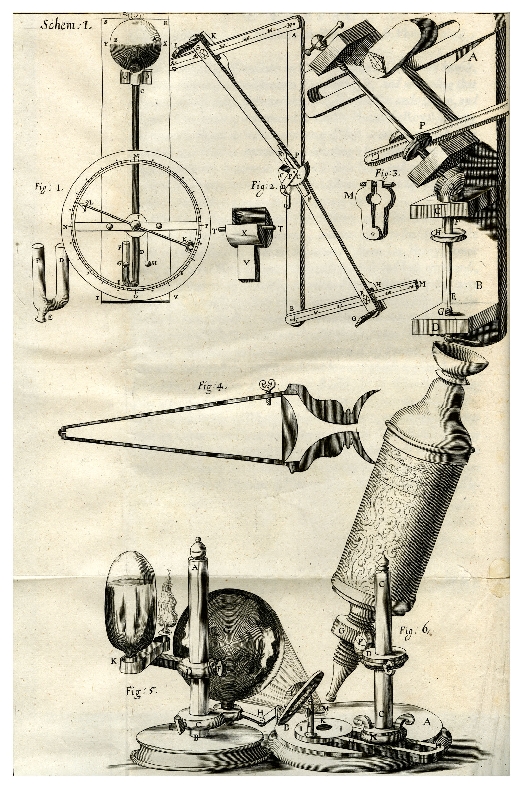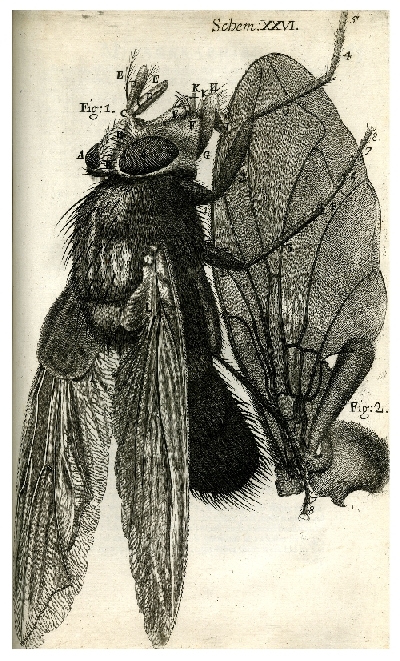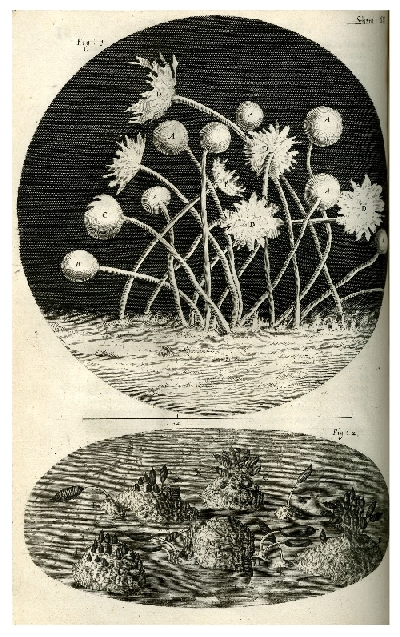
(London: Printed by J. Martyn and J. Allestry, 1665) (Pybus (Professor Frederick) Collection, Pyb. R.iii.2)
“The most ingenious book that I ever read in my life.” Samuel Pepys (diary, 21st January 1665).
Robert Hooke (1635-1703) was a natural philosopher and architect: he was curator of experiments for the Royal Society, Gresham Professor of Geometry, was chief assistant to Christopher Wren (the method by which the dome of St. Paul’s Cathedral was constructed was conceived by Hooke), Surveyor to the City of London following the Great Fire and indeed devised a set of planning controls for London which have retained some relevance.
He has been described as an irascible and querulous man and he fell into dispute with Isaac Newton over who should take credit for work on gravitation. His reputation suffered and it was only in the Twentieth Century that he was repositioned as one of the most important scientists of the Seventeenth Century.
Hooke’s Micrographia was the first major publication of the Royal Society and, capturing public imagination in a radically new way, became the first scientific best seller. The book includes planetary bodies, the origin of fossils and the wave theory of light but its main focus, and what was so exciting, were the descriptions and magnificent copperplate engravings of the things which he observed through a microscope – the stinger of a bee, the eyes of flies, seeds, and so forth. A previously invisible microscopic world was revealed. Micrographia is also notable for Hooke’s invention of the biological term ‘cell’ after walled plant cells reminded him of monks’ quarters.

(London: Printed by J. Martyn and J. Allestry, 1665) (Pybus (Professor Frederick) Collection, Pyb. R.iii.2)
The plates shown here (below) depict Hooke’s microscope; a hairy mould, “multitudes of which [Hooke] found to bespeck & whiten over the red covers of a small book, which, it seems, were of Sheeps-skin, that being more apt to gather mould, even in a dry and clean room, then other leathers” and a blue fly, which he describes as “a very beautifull creature“.

(London: Printed by J. Martyn and J. Allestry, 1665) (Pybus (Professor Frederick) Collection, Pyb. R.iii.2)
The edition held in Special Collections is part of the Pybus Collection of c.2,000 books which had been brought together by local medic and surgeon, Professor Frederick Charles Pybus (1883-1975). It has the armorial bookplate of The Right Honourable Francis Lord Brooke on the front pastedown and ms annotations on the title page.
